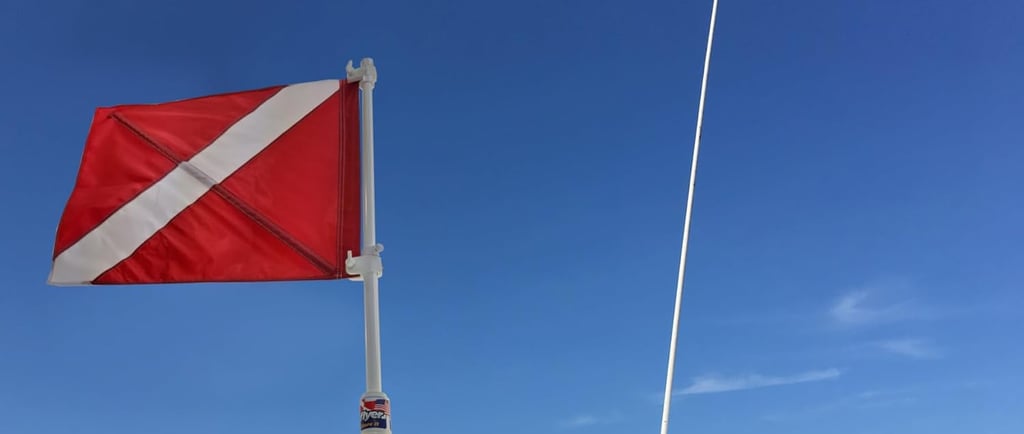Knives, Compass, SMB, Flashlight, Dive Computer Essential Gear for Safe and Efficient Diving
Knives, Compass, SMB, Flashlight, Dive Computer Essential Gear for Safe and Efficient Diving
SAFETY WHILE DIVING


Knives, Compass, SMB, Flashlight, Dive Computer Essential Gear for Safe and Efficient Diving
Essential scuba gear like knives, compasses, surface marker buoys (SMBs), flashlights, and dive computers play critical roles in ensuring safety, navigation, and effective communication underwater. Each of these items serves a specific function that enhances a diver’s ability to manage risks and stay oriented while exploring beneath the surface.
A dive knife can be a vital cutting tool in emergencies, while a compass provides reliable directional guidance when natural landmarks are unavailable. The SMB is essential for signaling the diver’s position to boats on the surface, increasing visibility and safety. Flashlights enable clear vision in low-light conditions or night dives, and dive computers track depth, time, and decompression limits to help avoid dive-related injuries.
Together, these tools support a diver’s situational awareness and safety protocol, making them indispensable for both recreational and technical diving. Understanding the purpose and proper use of each item is key to confidently navigating underwater environments.
Essential Navigation and Safety Tools for Diving
Reliable navigation and safety devices are crucial for any dive. Tools like compasses, dive computers, knives, and flashlights offer practical benefits, from orientation underwater to emergency preparedness. Each device serves a specific purpose and contributes to safer, more controlled dives.
Dive Compasses: Types, Features, and Top Picks
Dive compasses help divers maintain direction underwater where natural landmarks are scarce. There are two main types: mechanical compasses and digital dive compasses. Mechanical compasses, such as the well-known Suunto SK8, offer robust construction and straightforward use. Digital versions integrate with dive computers for enhanced functionality.
Key features to consider include durability, readability in low light, and ease of calibration. The Oceanic Side Scan compass, for example, offers clear markings and strong resistance to impact. Divers often prefer wrist-mounted compasses for quick reference while underwater.
Best dive compasses combine accuracy and ruggedness. Regular maintenance is essential to ensure the compass remains reliable across dives.
Dive Computers: Technology for Safety and Navigation
Dive computers track depth, time, and decompression limits to help manage dive safety. Modern models often include digital compasses, making them versatile for navigation as well as dive monitoring.
They calculate critical data such as no-decompression limits and ascent rates, reducing the risk of decompression sickness. Features like integrated air monitoring, temperature sensors, and logbook storage add further value.
Leading brands like Shearwater produce devices known for their precision and user-friendly interfaces. Divers should choose computers compatible with their diving style and experience level. Regular software updates and battery maintenance are important for optimal performance.
Dive Knives: Selection, Use, and Durability
A dive knife is an essential safety tool for freeing oneself from entanglement or cutting through fishing lines. Selection depends on blade material, size, and handle grip. Stainless steel offers sharpness but risks corrosion, while titanium is more corrosion-resistant and durable.
Knives should be easy to access, often attached to a BCD or leg strap. Besides safety, they serve utility functions like prying or gear adjustments underwater.
Durable construction and secure sheaths prevent accidental injuries. Proper training on knife use is crucial to avoid accidents and ensure the tool is used effectively.
Flashlights and Signaling Devices: Safety in Low-Visibility Environments
Flashlights improve visibility and communication in dark or murky waters. Reliable lighting enhances underwater exploration and signals divers in emergencies.
Factors to consider include brightness (measured in lumens), beam type (spot vs. flood), and battery life. Models with adjustable brightness allow divers to conserve energy while maximizing visibility.
Signaling devices often include strobes or surface marker buoys (SMBs) that improve diver location awareness above water. Bright, waterproof flashlights paired with strobes increase chances of rescue in low-visibility situations.
Durable, waterproof construction with secure mounting options ensures the flashlight remains functional even in challenging dive conditions.
Choosing and Maintaining Dive Equipment
Selecting reliable dive gear requires attention to durability, accuracy, and ease of use. Proper care extends the life of knives, flashlights, and dive computers, ensuring consistent performance in demanding underwater conditions.
Care and Maintenance Tips for Knives, Flashlights, and Dive Computers
Knives should be rinsed in fresh water after each dive to prevent corrosion. Regularly sharpen blades and check handles for secure attachment. Store knives dry in a safe, ventilated space.
Flashlights benefit from frequent battery checks and seal inspections to avoid leaks. Rinse with fresh water and dry completely before storage. Replace O-rings periodically to maintain waterproof integrity.
Dive computers require careful cleaning with fresh water after dives. Avoid exposure to harsh chemicals or sunlight. Perform software updates when available and replace batteries according to manufacturer guidelines to maintain accuracy and reliability.
Dive Flag
A dive flag is a crucial piece of safety equipment, especially when diving in smaller lakes or inland waters where boat traffic can be unpredictable. It signals to nearby boaters that there are divers below and they must keep a safe distance. Even in quieter bodies of water, unexpected jet skis, fishing boats, or kayakers can pose a serious risk. Using a dive flag helps prevent accidents by clearly marking your location on the surface, giving others the chance to steer clear. Whether you're doing a shore entry or diving from a small boat, flying a dive flag is a simple step that significantly increases your safety underwater.
